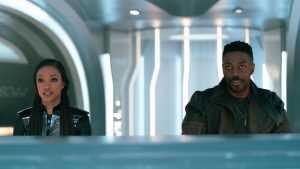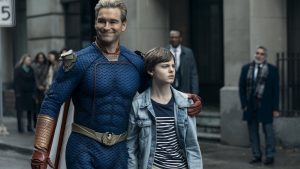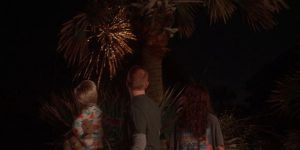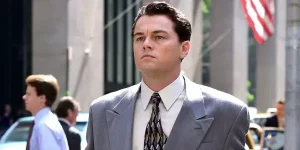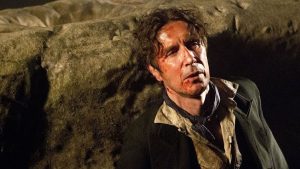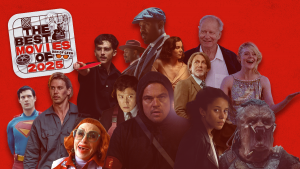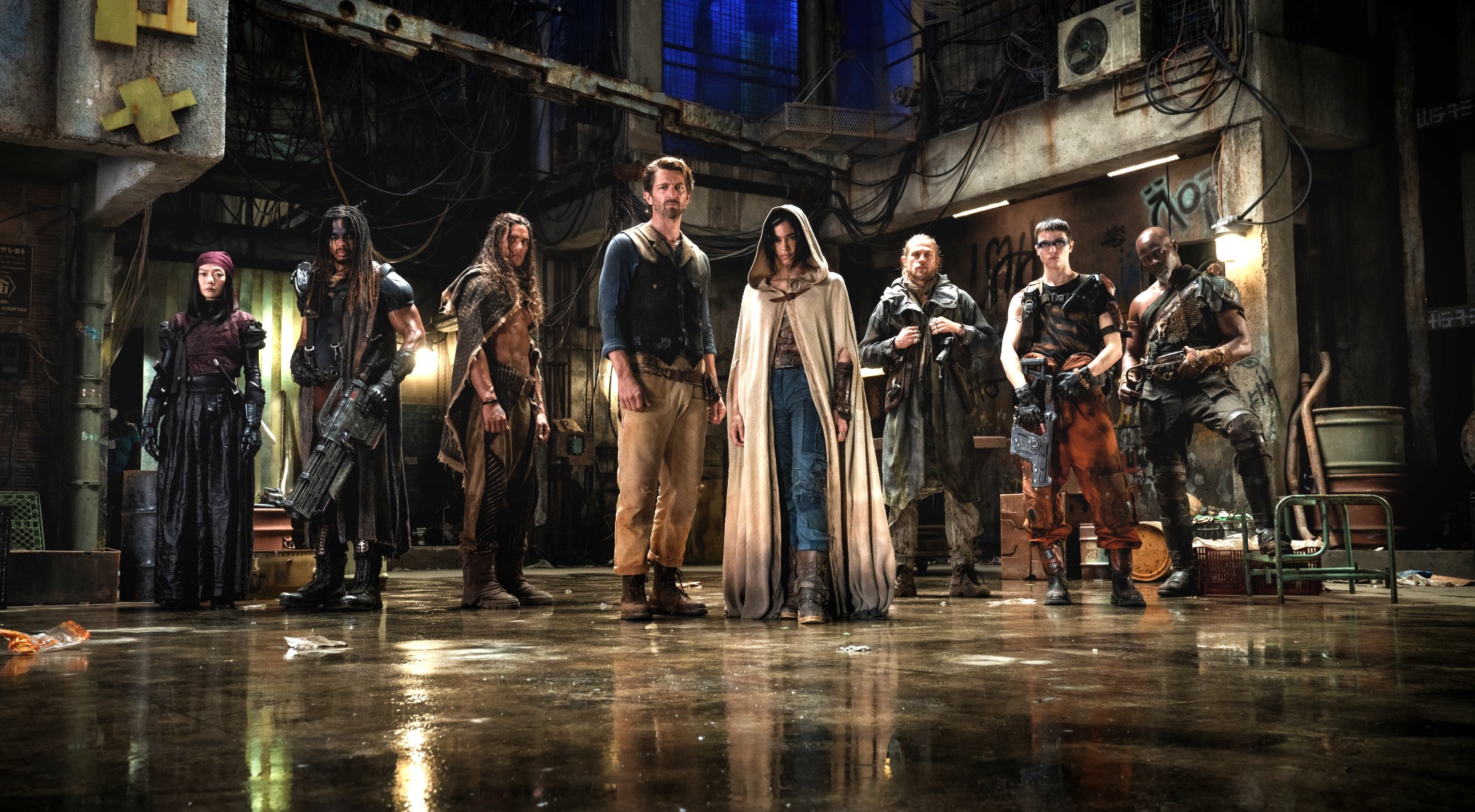
This Rebel Moon article contains spoilers.
After rolling credits on Rebel Moon Part 1: A Child of Fire, you won’t be surprised to learn the Netflix movie began life as a pitch for a new Star Wars film. Director Zack Snyder brought his idea for a “more mature” Star Wars movie to Lucasfilm in the early days of Disney’s takeover of the studio. While that version of what would become Rebel Moon never got off the ground, it freed Snyder to create his homage to George Lucas and Akira Kurosawa’s Seven Samurai completely in his own way, without having to stick to the established rules of the galaxy far, far away. The result is a movie that plays with all of Lucas’ toys but in a much darker universe full of “violence, sex, and swearing.”
Yet, while Snyder goes his own way with some of the material, there’s no question that Rebel Moon still owes A LOT to Lucas’ world. Here are some of the major nods to Star Wars you’ll find in the director’s latest…
Kora and Luke
We have to begin with Kora, the “farm girl” destined to lead the fight against the evil Imperium. But Snyder’s storytelling instinct of course is to twist the classic space fantasy origin story into something much darker. In Star Wars, Luke is an orphan living on a farm when his destiny finds him in the form of the kind Obi-Wan Kenobi, who helps him take his first steps into becoming the galaxy’s greatest hero. Kora is discovered as a child too, but not by a wise old warrior but by the cruelest soldier in the entire Imperium, Regent Balisarius. We watch in flashbacks as the would-be Emperor of the Rebel Moon universe molds her into the perfect fascist cog.
Luke is an innocent farm boy unaware of his own lineage or powers at the start of A New Hope, but by the time we meet Kora, she’s already complicit in countless atrocities committed during her days as a Space Nazi. The Kora living a quiet life on Veldt is in need of redemption for past crimes, which you could argue puts her closer to Darth Vader’s arc in the movies than Luke. Either way, it’s clear Snyder is nodding at the Skywalkers here, both the good and bad parts of that legacy.
You could also make a case that there’s a bit of Luke in Michiel Huisman’s Gunnar, a farmer who is initially too much of a coward to stand up to the Imperium, but later discovers the fighting spirit in the third act. Don’t get me wrong, Luke’s much braver than Gunnar from act one, but he also has to overcome his own doubts — about his place in the larger galaxy, the Rebellion’s chances against the Empire, his abilities, and the Force itself — in order to become his best self. That’s a bit like Gunnar choosing to fight when it matters most in the third act of Rebel Moon.
The Imperium and the Bloodaxes
You could barely call it a nod or an homage. Snyder basically used cut and paste for this universe’s central conflict. We learn very early on that there’s a war going on beyond the peaceful farmlands of Veldt between the evil Imperium and the Bloodaxes, the faction of resistance fighters who are pushing back against fascist tyranny. Like the Rebellion, the Bloodaxes are outnumbered, outgunned, and constantly pursued by their much more powerful enemy. They fly starfighters against the Imperium’s mightier freighters and usually have to resort to guerilla tactics to wage war on their oppressors. They’re also led by a brother and sister, which is obviously no accident.
Of course, Snyder employs a completely different visual aesthetic for his rebels than the orange jumpsuit-wearing ones in Lucas’ world. The director favors the grungy Viking look and massive guns that make the Bloodaxes look like something right out of the pages of Heavy Metal magazine (which was his intention). Meanwhile, the Space Nazis look like exactly that, down to the SS uniforms worn by Admiral Noble and the Regent, who lead armies of stormtroopers in everything but name.
Noble and Vader, Balisarius and the Emperor
Again, Snyder is taking classic Star Wars characters, changing their names and looks but essentially copying their roles in the story. Regent Balisarius is clearly meant to be the Emperor, the all-powerful leader of the Imperium who ascended the throne after the fall of the last government upon the death of Motherworld’s king. Like Palpatine, Balisarius was once a Senator (the Galactic Senate is one of the more curious things Snyder borrows from Star Wars, considering its unpopularity in the Prequels). He’s also the corrupting force that twisted Kora in her youth, much like Palpatine tried to do to Luke in Return of the Jedi.
Noble is incredibly Vader coded, down to the very machine parts he’s hiding under his flesh and the weird goo used to heal him in the last minutes of the film. He’s hell-bent on destroying the Bloodaxes at all costs, spends much of the movie chasing these rebels, and has no problem killing anyone who stand in his way. Noble also takes out his frustrations on his own men a la Vader and would definitely Force choke them if he could. But Snyder also makes the character weirdly horny in a way Vader never was. Not even creepy Attack of the Clones Anakin was so hot and bothered as to get down with Noble’s version of tentacle porn. The director really wants you know that, unlike Star Wars, this movie really isn’t for 12 year olds.
The Princess and the Force
Rebel Moon spends a lot of time mentioning the mysterious Princess Issa, who its said died during an attack on the royal family that also killed the King. It’s heavily implied throughout the movie that Kora aided in the attack the led to the death of the Princess, whom she was ordered to protect. Of course, scenes between Charlotte Magi’s Sam and the droid Jimmy hint that the Princess may still be alive and that Kora hid her on Veldt.
Jimmy, a robot knight programmed to serve and protect the royal family, quickly grows close to Sam and is unable to kill her when ordered to by Imperium soldiers, suggesting this would go against his programming (i.e. killing the Princess). And it’s a threat against Sam — Snyder decided his stormtroopers enjoy raping young women in this universe, one of the more incredibly cringey parts of this Star Wars pastiche — that finally convinces Kora to fight for Veldt instead of run away from it.
Don’t know if you remember this, but there’s a princess at the center of much of the Star Wars saga too, but more interesting than the archetype itself is what this particular princess represents in Snyder’s galaxy far, far away. In a flashback, we learn the Princess of Motherworld wielded powers that could heal and resurrect other living things, a gift so great that the royal family believed she’d finally bring peace to the galaxy after years of war and conflict. That sounds a bit like this universe’s version of the Force and the lore about bringing balance between the light and dark sides. If Sam really is supposed to be the Princess in hiding, could we see Force-like powers in Part 2?
Jimmy and Threepio
A majestic-looking robot with an English accent courtesy of Anthony Hopkins. Jimmy is essentially C-3PO but with a couple of Oscars to his name. But don’t let Jimmy’s passivity fool you into thinking he’s as peace-loving (or cowardly) as Threepio. This robot used to be a knight and is ready to get back in the game by the end of the first movie, complete with a crown of antlers upon his head and a staff. As we wrote in our dissection of the ending, it’s pretty clear that Jimmy will make up the seventh member of Snyder’s Seven Space Samurai. Threepio would never.
But more than surface details, Jimmy fulfills a role in the story of Rebel Moon that nods to Lucas’ own thoughts on who is telling the in-universe story of Star Wars. The Maker famously said a few years back that the Skywalker Saga that unfolds on the big screen is actually from the perspective of R2-D2, who is the narrator recounting the story to the mysterious history keepers known as the Whills. So in Rebel Moon, Snyder makes Jimmy the droid the narrator of a few key scenes, perhaps nodding to Lucas’ own framing device for the galaxy far, far away.
Veldt and Tatooine, Motherworld and Coruscant
A moon on the outskirts of space suddenly invaded by the greatest military force in the galaxy, the home of the Have Nots trampled by the Haves of the capital world. We’re talking about Veldt and Motherworld, but could just as easily be describing the dynamic between Tatooine and Coruscant throughout the Star Wars saga. Veldt even has a cantina full of scummy aliens, who pick a fight with Gunnar and Kora and are subsequently put down a la Ponda Baba and Cornelius Evazan in A New Hope. It’s also at this cantina that Kora and Gunnar meet Charlie Hunnam’s Kai, the Han Solo-inspired mercenary of the piece, who flies them off the planet on his ship.
We don’t see much of Motherworld beyond flashbacks to the royal palace and the Senate chamber, but it’s an incredibly wealthy place whose splendor is very likely the result of all the ways it has subjugated the other planets in the Imperium. Like the Empire searching for the droids on Tatooine, the Imperium also arrives on Veldt looking for something, in this case resources to keep its war machine running.
Mercenaries, Swordmasters, and Old Generals
Snyder plays with every Star Wars character type in the book, while also including a bit of influence from Conan the Barbarian in Staz Nair’s Tarak, a beastmaster who is also secretly a prince. You get Kai, who is meant to be the opportunistic mercenary Han Solo type, but Snyder subverts expectations here in the one solid twist of the movie when Hunnam’s character betrays the heroes, handing them over to Noble for the cash. There’s Doona Bae’s Nemesis, a sword master and monster hunter with energy blades not unlike lightsabers, as well as old General Titus (Djimon Hounsou), a bit of a spoof of General Kenobi, if Obi-Wan were a down-on-his-luck drunk fighting in gladiator arenas.
In a nod to Frank Herbert’s Dune, one of the works that most heavily inspired Star Wars, Snyder also sneaks in a bit of an ecological message during scenes set on Veldt and especially the fight with Jena Malone’s grotesque spider queen Harmada, who tells the heroes she wants revenge on the humans who overmined and polluted her home planet Daggus. Stripped of all its natural resources, Daggus is a window into the future of Veldt if Kora and her Magnificent Seven are unable to stop the Imperium in the sequel out this spring.
Rebel Moon Part 1: A Child of Fire is out now on Netflix.
The post Rebel Moon: All the Major Star Wars Influences in the New Zack Snyder Movie appeared first on Den of Geek.
